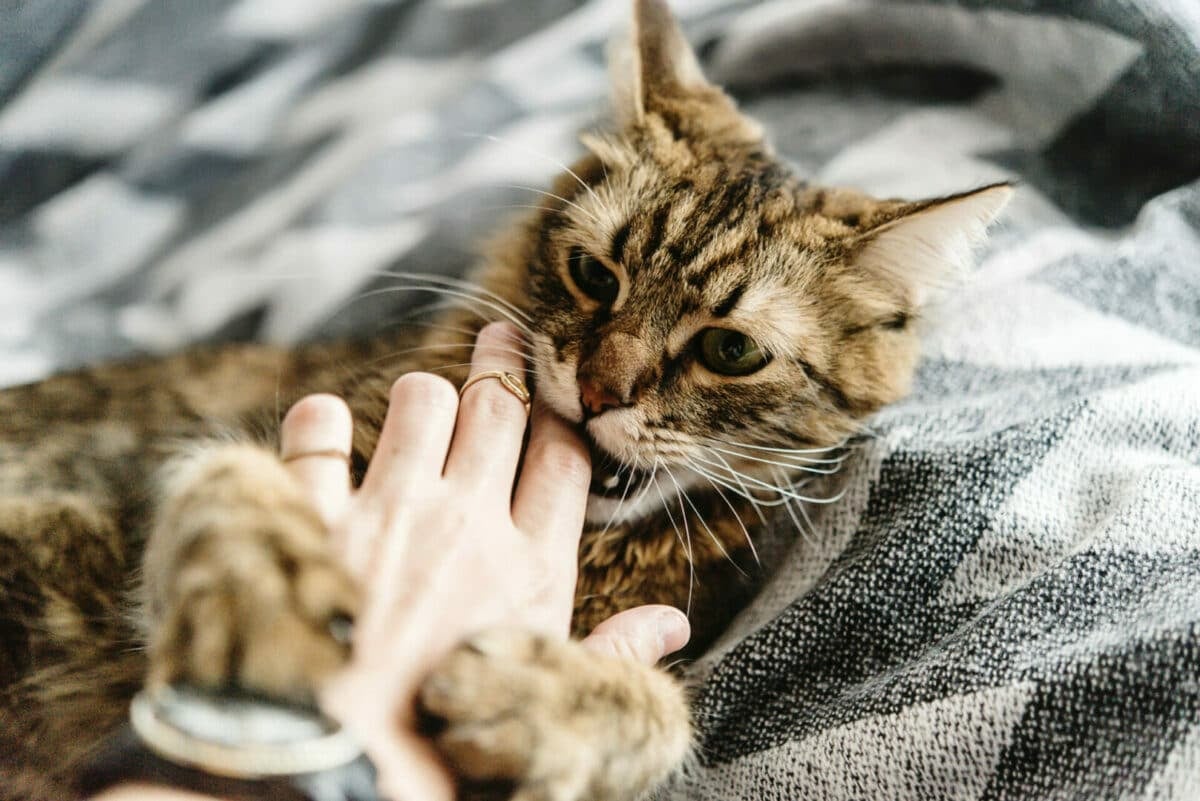Cats can’t talk, but they use their entire bodies to let people and other animals know what they’re thinking. From the tips of their ears all the way to their tails, almost every move your cat makes can be interpreted into a message. Cat ear language is one of the most important ways your cat communicates with you. With 32 individual muscles in each velvety soft ear, cats have incredible mobility in their ears. They can move each ear independently of the other, and they use specific ear positions to broadcast their thoughts and feelings.
If you pay attention, you can learn a lot about your cat based on the position of their ears. Here’s a basic breakdown to help you understand cat ear language.
Forward Facing Ears
Cat ears are naturally erect. When they’re facing forward, it means your feline friend is in a good mood. Cats often show off their “happy ears” when they’re playing or following you around the house. If you’re not already giving your friendly feline some loving, now would be a great time to lean down for some pets or to toss a catnip mouse.
Ears Turned in One Direction
As we mentioned earlier, cats have the cool ability to move one ear at a time. They can point their ears in different directions to help them hear things from all around. If you ever notice that your cat’s ears are positioned straight up but facing to the left or right, it probably means they’re listening intently.
Cats can hear at a much higher pitch than humans. They could be paying attention to something you aren’t capable of hearing. If you’re curious to know what it is, follow the direction your cat’s ears are pointing.
Twitching Ears
Twitching or flickering is an important part of cat ear language. In most cases, it’s a sign your cat is feeling slightly on edge. They could be agitated due to the pesky dog or alert due to a new noise coming from the kitchen. Some cats twitch their ears when they’re feeling particularly cranky or disagreeable. You’ll have to read their other body language signals to get a more complete idea of what’s going on.
“Airplane” Ears
When a cat flattens their ears and points them sideways, it looks a lot like airplane wings sticking out from their head. Consider this kind of ear language a message about nerves and anxiety.
Airplane ears are usually an indication that something uncomfortable is going on. Maybe you’re trying to trim your kitty’s nails or introduce them to a new pet. You’ll need to monitor the situation closely to prevent it from escalating.
Pinned Back and Flat
If your cat’s ears are ever flat against their head and pinned backward, you better watch out. It’s different than airplane ears, because you won’t be able to see the opening of their ear canal. This indicates the cat is feeling scared, defensive, angry, aggressive, or all four at once. It’s basically a cat’s way to tell whoever is around to stay back and leave them alone. It’s a threat that could turn into an attack if their message isn’t heard or respected.
The general rule is that the flatter a cat’s ears are, the more frightened they are. And because most of feline aggression comes from fear, it can also indicate how soon you can expect some kind of swat or full-out attack. When this happens, you should also pay attention to the rest of the cat’s body language. Raised hackles, a stiff body posture, and a puffed up tail mean the situation urgently needs to be defused before someone gets hurt.
Understanding cat ear language will give you a deeper insight into what your cat is thinking and feeling. That improved communication will also help strengthen your bond. So no matter what your cat’s ears are trying to tell you, you can show them you’re always ready to listen.
Cats are known for communicating mostly with us with those mighty meows of theirs. Find out how to decode your cat’s meow by checking out this article on cattitudedaily.com.






